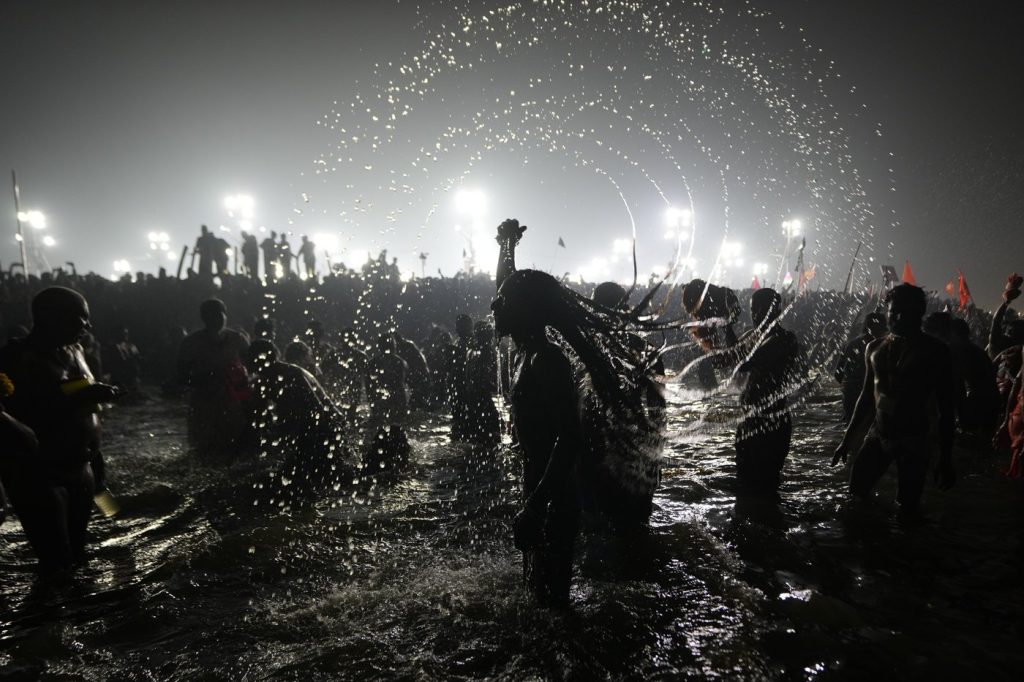PRAYAGRAJ, India (AP) A striking image emerges from the confluence of three rivers: a Naga Sadhu, or Hindu ascetic, rises from the water, his dreadlocked hair sending droplets swirling in a clockwise motion. Surrounding him are fellow devotees, some waving saffron flags, enacting a timeless ritual believed to cleanse sins and liberate souls from the cycle of rebirth. This scene embodies the essence of the ongoing Maha Kumbh festival in Prayagraj, renowned as the largest religious gathering on the planet.
The Maha Kumbh festival commenced on January 13 and will continue until February 26. Each day, millions of Hindus immerse themselves in the chilly waters at the sacred confluence known as Sangam, where the Ganges, Yamuna, and the mythical Saraswati rivers converge. This act of bathing is believed to confer salvation upon participants. On especially auspicious dates, Hindu ascetics race towards the rivers at dawn, showcasing their dedication to their faith.
Historically, these ascetics belong to religious orders that originated from mercenary groups, and they hold deep reverence for Lord Shiva, a principal deity in Hinduism. The tradition of the Maha Kumbh festival traces its origins to a mythological event in which the god Vishnu retrieved a golden pitcher filled with the nectar of immortality from demons. It is believed that drops of this nectar fell in four sacred cities: Prayagraj, Nasik, Ujjain, and Haridwar. These locations have hosted the Kumbh festival in a rotating cycle for centuries, illustrating the enduring significance of this event in Hindu culture.
This year, nearly 400 million participants are expected to attend the festival, reaffirming its status as a monumental religious occasion. The communal atmosphere fosters a sense of unity and devotion among attendees, as individuals from diverse backgrounds converge to partake in the ancient traditions associated with their faith.
The Maha Kumbh festival not only serves as a spiritual pilgrimage for participants but also as a vivid demonstration of the rich tapestry of Hindu beliefs and practices. The confluence of the rivers symbolizes a place of tranquility and purification, drawing millions to its banks in search of blessings and release from their past transgressions.










